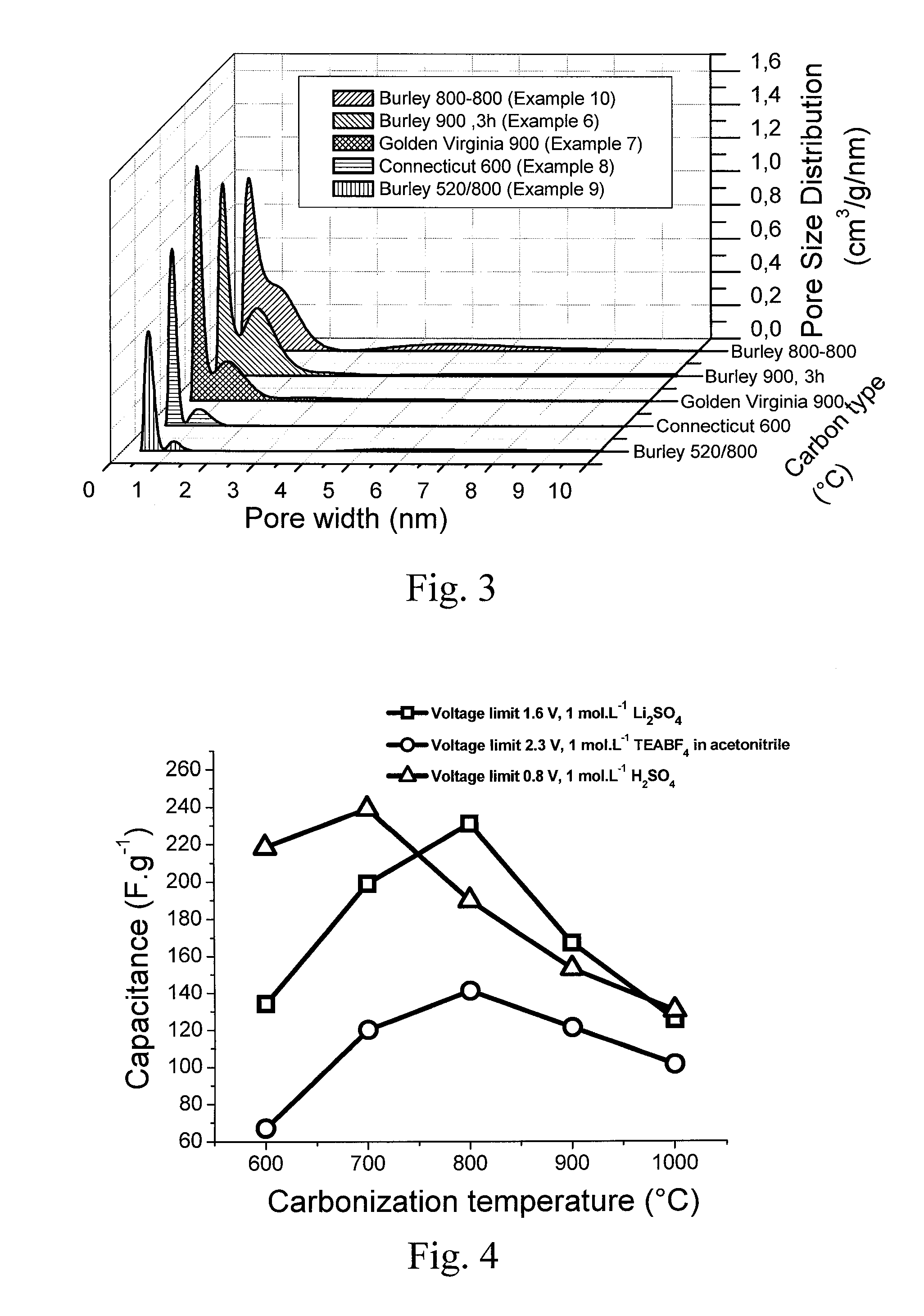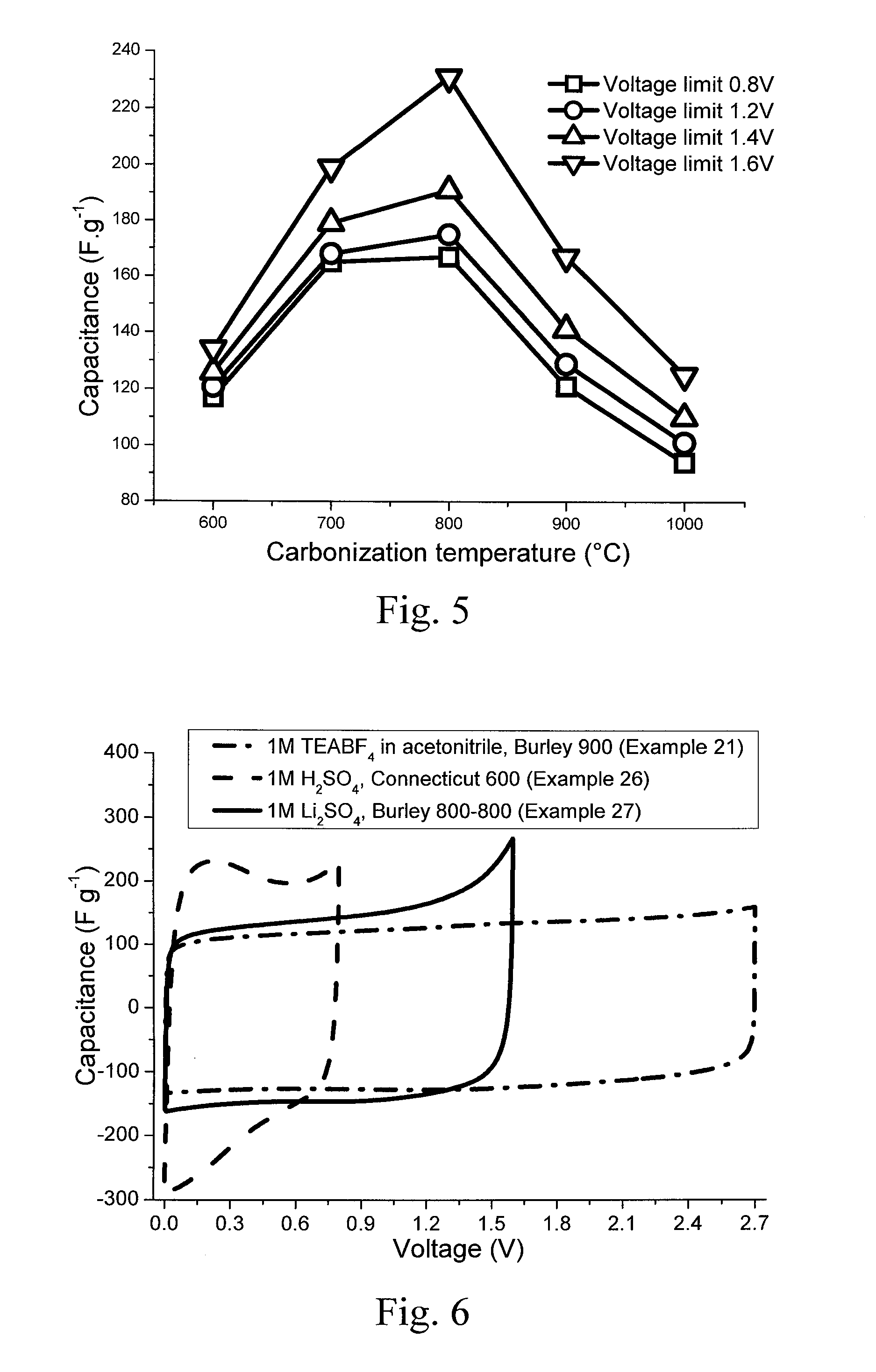Production of activated carbon from tobacco leaves by simultaneous carbonization and self-activation and the activated carbon thus obtained
a technology of activated carbon and tobacco leaves, which is applied in the field of activated carbon, can solve the problems of not providing information about the activation process itself, and achieve the effects of high capacitance, improved capacitance, and improved capacitan
- Summary
- Abstract
- Description
- Claims
- Application Information
AI Technical Summary
Benefits of technology
Problems solved by technology
Method used
Image
Examples
example 1
Producing Activated Carbon from Tobacco Burley Leaves' Stems at a Pyrolysis Temperature of 600° C.
[0065]Tobacco leaves' stems were dried for 12 hours at 110° C. until reaching a constant weight. The dry mass was grinded to obtain a uniform powder. The powder in the amount of 4 g was placed in a crucible in a tubular furnace under a nitrogen flow rate of 100 ml min−1. The temperature was increased at 10° C. min−1 and the final pyrolysis temperature was set to 600° C. and hold for one hour. The as-prepared carbon was washed successively with an excess of 40% hydrofluoric acid solution, then with distilled water to remove acid and then an excess of 20% hydrochloric acid solution and further with distilled water until the pH of the filtrate was close to 7. The sample was dried in air at the temperature of 110 (±5° C. and then in a stove under reduced pressure for 12 hours at 110 (±5° C. until complete evaporation of water. The obtained product was a black powder.
[0066]The porous texture...
example 2
[0071]A method for producing activated carbon from tobacco Burley leaves' stems at a pyrolysis temperature of 700° C. Apart of the carbonization temperature, all the other conditions were the same as indicated in Example 1.
[0072]The results of the various analyses are shown in Table 1, FIG. 1 and FIG. 2.
example 3
[0073]A method for producing activated carbon from tobacco Burley leaves' stems at a pyrolysis temperature of 800° C. Apart of the carbonization temperature, all the other conditions were the same as indicated in Example 1.
[0074]The results of the various analyses are shown in Table 1, FIG. 1 and FIG. 2.
PUM
| Property | Measurement | Unit |
|---|---|---|
| temperature | aaaaa | aaaaa |
| temperature | aaaaa | aaaaa |
| temperature | aaaaa | aaaaa |
Abstract
Description
Claims
Application Information
 Login to View More
Login to View More - R&D
- Intellectual Property
- Life Sciences
- Materials
- Tech Scout
- Unparalleled Data Quality
- Higher Quality Content
- 60% Fewer Hallucinations
Browse by: Latest US Patents, China's latest patents, Technical Efficacy Thesaurus, Application Domain, Technology Topic, Popular Technical Reports.
© 2025 PatSnap. All rights reserved.Legal|Privacy policy|Modern Slavery Act Transparency Statement|Sitemap|About US| Contact US: help@patsnap.com



